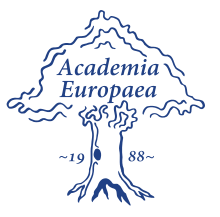Conveners
Inagural Presentations: Part I, chaired by Prof. M. Harakeh
- Tamás Csörgő (Wigner RCP Budapest and EKE KRC Gyöngyös, Hungary)
- Muhsin Harakeh (KVI, Groningen, The Netherlands)
Inagural Presentations: Part II, chaired by prof. T. Csörgő
- Muhsin Harakeh (KVI, Groningen, The Netherlands)
- Tamás Csörgő (Wigner RCP Budapest and EKE KRC Gyöngyös)
The main goal of this talk is to describe some of my achievements and research work in the field of nonlinear dynamics, chaos and complex systems. Among the different lines of research, I will mention results on dynamics of partial control, vibrational resonance and nonlinear resonances, fractal structures in nonlinear dynamics, modeling biological systems, predictability of chaotic dynamics,...
Following the observation of Bose-Einstein condensation of cavity exciton-polaritons, important advances have been obtained towards the realization of polariton-condensates based devices. I will present, as an example, the realization of an all-optical device controlling polariton condensates in confined geometries, demonstrating the realization of a novel transistor switche mediated by...
Dark Matter is currently one of the greatest unsolved mysteries in physics. Recently, we used the 7Li(p,e+e-)8Be reaction to excite an 18.15 MeV excited state in 8Be and observed its internal pair (e+e-) decay to the ground state. An anomaly in the form of peak-like enhancement relative to the internal pair creation was observed at large angles in the angular correlation [1]. It turned out [2]...
The first stars emerge about 400 million years after the Big Bang with the end of the dark age of the Universe. The chemical composition represents a primordial abundance distribution of hydrogen, helium, and lithium isotopes as defined by Big Bang nucleosynthesis. The first stars are predicted to have had masses up to several hundred solar masses. Later generation stars are stabilized by...
An international consortium of 10 countries, namely Finland, France, Germany, India, Poland, Romania, Russia, Slovenia, Sweden and the United Kingdom has set out to build one of the largest accelerator facilities in the world for fundamental and applied research. This facility is being built in Darmstadt, Germany next to the existing GSI facility. About 3000 scientists from more than 50...
Rotation, a collective phenomenon that was found in excited atomic nuclei, may induce important changes in the nucleus. The centrifugal force breaks the pairing between nuclei, and the nucleus starts behaving as a liquid. When rotational speed increases, the nucleus changes its shape, from spherical or slightly prolate, to the oblate one, and at some critical value, the nucleus may even...
One of the world's largest scientific projects, the international fusion experiment ITER, currently under construction in Europe (Cadarache, France), needs for plasma heating and for current-drive powerful neutral beams delivering 33 MW in total by two beamlines. Key elements in this neutral beam system are large RF-driven ion sources with an area of 1 x 2 m2 generating negative ion beams of...
The key physics phenomena which govern the behaviour of magnetically confined fusion plasmas in toroidal geometry have been the subject of intense research in recent decades. A detailed understanding of these high temperature, ‘collisionless’ plasmas must integrate the role of turbulent transport processes, magnetohydrodynamic stability, the interaction of high energy particles produced by...
When squeezed to a narrow, effectively two-dimensional layer, and subject to low temperature and high magnetic field, a gas of electrons of appropriate density may condense into a new form of quantum matter called “quantum electron liquid”, discovered for the first time in the context of “fractional quantum hall effect” (1998 Nobel prize in physics). The properties of this fascinating state of...
The talk will briefly overview the funding programs of the European Research Council (ERC) focusing on frontier, high-risk research. Physics and engineering areas will be covered, showing and discussing some relevant, key statistics. The challenges facing the ERC in the next framework programme will be outlined.
*Andrzej Jajszczyk is a member of the Scientific Council of the ERC

